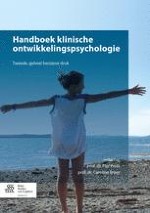Een transactioneel ontwikkelingsmodel in opkomst
Autisme heeft altijd een sterke aantrekkingskracht uitgeoefend op clinici en onderzoekers uit diverse disciplines. Het wordt beschouwd als een ernstige en levenslange stoornis met een duidelijke impact op het dagelijks functioneren. In de DSM-5 werden autisme en verwante stoornissen samengevoegd tot één overkoepelende diagnose: de autismespectrumstoornis. Deze wordt enerzijds gekenmerkt door persisterende deficiënties in de sociale communicatie en sociale interactie in uiteenlopende situaties, en anderzijds door beperkte repetitieve gedragspatronen, interesses of activiteiten. Het veld van autismespectrumstoornis is nog in volle ontwikkeling. De afgelopen twee decennia werden belangrijke vorderingen gemaakt op het vlak van (vroegtijdige) diagnose en interventie. Tevens werd een indrukwekkende hoeveelheid onderzoek gedaan naar de kenmerken, ontwikkelingstrajecten en oorzaken van autismespectrumstoornis. Hoewel hierdoor een aantal vragen werd beantwoord, bracht dit onderzoek ook nieuwe vragen aan het licht. De ontwikkeling van transactionele ontwikkelingsmodellen voor ASS staat nog in de kinderschoenen. Dit vormt een van de belangrijke uitdagingen voor toekomstig onderzoek.
